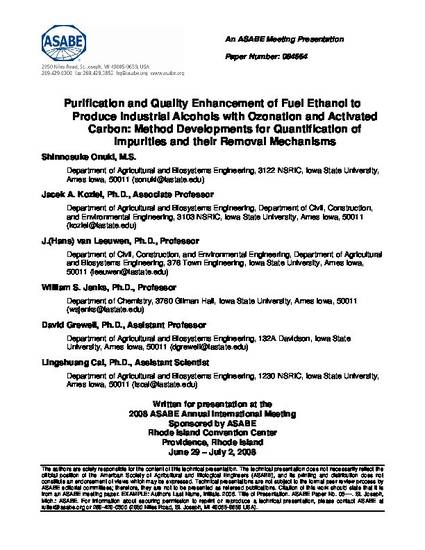
The total ethanol production in the United States became over 9 billion gallons/year in 2007. Only about 3% of this is used in producing food-grade alcohol, but this represents a higher value product. The ethanol production process includes corn milling, cooking, saccharification, fermentation, and separation by distillation. To achieve industrial and food-grade quality, additional purification is required. Impurities in ethanol could threaten human health and cause unpleasant flavors. This purification is currently achieved by further distillation. Further distillation is costly and not totally effective in removing all impurities. We have tested an advanced approach to purify ethanol by using ozone, activated carbon, and carbon dioxide. In previous research, we have shown that ozone can remove several undesirable compounds that remain in ethanol after distillation. Also, additional treatment with activated carbon can adsorb ozonolysis byproducts and some non-oxidizable compounds. In this study, we have focused on method development for analysis of volatile by-products using solid phase microextraction (SPME) of headspace volatiles and gas chromatography-mass spectrometry (GC-MS). We have also determined which of the mechanisms (ozonation, gas stripping, and activated carbon treatment) is responsible for removal of impurities. To date, we have confirmed up to 100% reduction of particular impurities by ozonation alone, but additional removal of some compounds occurs through gas stripping and GAC adsorption. The cost of the proposed treatment process is expected to be below 0.02 dollars per gallon. It is much lower than the cost of additional distillation, ca. 0.30 dollars per gallon.
Available at: http://works.bepress.com/david_grewell/8/

This is an ASABE Meeting Presentation, Paper No. 084664.